The post FAQs About UV Flashlights in Crime Scene Investigations appeared first on Tank007.
]]>1. What Is a UV Flashlight, and How Does It Work?
Answer:
A UV flashlight emits ultraviolet light—a type of electromagnetic radiation with wavelengths shorter than visible light but longer than X-rays. It causes certain substances to fluoresce (emit visible light) when exposed to UV rays, making them visible to investigators.
Common UV Wavelengths Used:
| Type | Wavelength (nm) | Application |
|---|---|---|
| UV-A (Longwave) | 320–400 nm | Bodily fluids, fingerprints, and fibers |
| UV-B (Midwave) | 280–320 nm | Less common, some biological traces |
| UV-C (Shortwave) | 100–280 nm | Fibers, bones, older evidence |
Key Insight: UV-A light is the most widely used in forensic investigations due to its balance of safety and effectiveness.
2. What Evidence Can UV Flashlights Detect?

Answer:
UV flashlights can reveal a range of evidence types, including:
| Evidence Type | UV Light Wavelength | Explanation |
|---|---|---|
| Bodily fluids (blood, urine, saliva) | UV-A | Fluoresce due to proteins and other compounds |
| Fingerprints | UV-A | Detects oils and sweat residues |
| Fibers and hairs | UV-C | Causes bright fluorescence in synthetic materials |
| Bone fragments | UV-C | Detects phosphorus and calcium content |
| Security markings | UV-A | Reveals hidden inks and dyes used for authentication |
Pro Tip: Use a 365 nm UV flashlight for optimal results in crime scenes.
3. Are UV Flashlights Safe to Use?
Answer:
While UV-A light is relatively safe, prolonged exposure can cause skin and eye damage. Here are some safety tips:
- Wear protective glasses rated for UV protection.
- Limit exposure time to UV light sources.
- Avoid direct eye contact with the beam.
Comparison of UV Safety Risks:
| Type of UV Light | Health Risk Level | Recommended Protection |
|---|---|---|
| UV-A | Low to moderate | Safety glasses and gloves |
| UV-B | Moderate | Full-face shield and protective clothing |
| UV-C | High | Complete skin and eye protection required |
4. How Do You Choose the Right UV Flashlight for Investigations?
Answer:
Consider these factors when selecting a UV flashlight:
| Factor | Recommendation |
|---|---|
| Wavelength | 365 nm for crime scenes |
| Light Intensity | 1,000–2,000 mW for adequate fluorescence |
| Battery Type | Rechargeable lithium-ion for longer use |
| Material | Anodized aluminum for durability |
Pro Tip: Choose a flashlight with adjustable focus to switch between wide and narrow beams for different evidence types.
5. Can UV Flashlights Detect Blood Even After Cleanup?
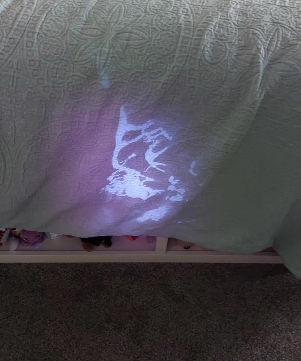
Answer:
Yes, but with limitations. Hemoglobin in blood can fluoresce under UV light, even after attempts to clean it. However, strong cleaning agents can reduce fluorescence. For more accuracy, luminol or fluorescein combined with UV light is recommended.
Effectiveness of UV Light on Cleaned Blood:
| Cleaning Method | UV Detection Success | Recommended Approach |
|---|---|---|
| Basic cleaning (soap) | High | UV-A light (365 nm) |
| Bleach cleaning | Medium | Luminol test with UV light |
| Industrial cleaners | Low | Alternate chemical tests needed |
6. How to Maintain and Care for a UV Flashlight?
Answer:
To ensure long-lasting performance:
- Clean the lens regularly with a microfiber cloth.
- Store in a dry place to prevent moisture damage.
- Check battery contacts for corrosion.
Maintenance Checklist:
| Task | Frequency |
|---|---|
| Clean lens | After each use |
| Check batteries | Monthly |
| Inspect for cracks or damage | Quarterly |
Conclusion
UV flashlights are powerful tools in forensic investigations, capable of uncovering hidden evidence quickly and effectively. By understanding their types, uses, and maintenance needs, you can maximize their potential in crime scene analysis.
The post FAQs About UV Flashlights in Crime Scene Investigations appeared first on Tank007.
]]>The post How UV Light Reveals Hidden Evidence at Crime Scenes appeared first on Tank007.
]]>1. The Science Behind UV Light in Forensics
UV light is a type of electromagnetic radiation with wavelengths shorter than visible light but longer than X-rays. In forensics, two main types of UV light are commonly used:
- UV-A (Longwave): 320–400 nm, less intense, often used for general searches.
- UV-C (Shortwave): 100–280 nm, more intense, effective for revealing specific substances.
How UV Light Works: When UV light shines on certain substances, they absorb the energy and re-emit it as visible light—a process known as fluorescence. Many biological materials and synthetic substances fluoresce under UV light, making them easier to detect.
2. Common Types of Evidence Revealed by UV Light
| Type of Evidence | UV Wavelength Used | Fluorescence Color | Common Applications |
|---|---|---|---|
| Bodily Fluids (e.g., blood, saliva, semen) | UV-A (365 nm) | Blue, green, or yellow | Sexual assault cases, violent crimes |
| Fingerprints (with fluorescent powder) | UV-A (365–395 nm) | Bright blue or green | Burglary, theft |
| Fibers and Textiles | UV-C (254 nm) | Various colors | Linking suspects to crime scenes |
| Bone Fragments | UV-C (254 nm) | Pale white or green | Mass graves, cold cases |
| Drugs and Narcotics | UV-A (365 nm) | Blue or green | Drug enforcement |
Insight: Choosing the correct UV wavelength is essential for maximizing evidence detection.
3. How UV Light Detects Bodily Fluids
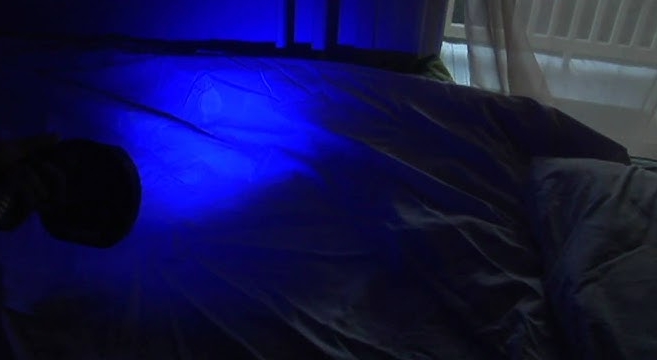
Bodily fluids like semen, saliva, and sweat contain compounds that fluoresce under UV-A light due to proteins and enzymes. However, blood does not fluoresce naturally; it absorbs UV light instead, appearing black or dark.
Method:
- Investigators darken the room and use a UV-A flashlight.
- Protective goggles are worn to enhance visibility of the fluorescence.
- Fluids emit blue, green, or yellow fluorescence, helping identify their locations.
4. Using UV Light for Fingerprint Detection
Fingerprints are made visible under UV light when treated with fluorescent powders or dyes such as Rhodamine 6G or Ninhydrin. The oils and sweat in prints can also fluoresce directly.
| Detection Method | Advantages | Disadvantages |
|---|---|---|
| Fluorescent Powder + UV-A | Clear visibility, effective on non-porous surfaces | Requires careful application |
| Ninhydrin + UV-A | Useful on porous surfaces (e.g., paper) | Time-consuming to develop |
| Direct UV Light (No Powder) | Quick and easy | Lower contrast, limited to fresh prints |
Recommendation: Using fluorescent powder and UV-A light offers the best results for non-porous surfaces.
5. Comparing UV Wavelengths for Forensic Applications
| UV Wavelength | Common Uses | Advantages | Disadvantages |
|---|---|---|---|
| UV-A (Longwave, 365–395 nm) | Bodily fluids, fingerprints, narcotics | Less damaging to evidence, portable | Lower fluorescence intensity |
| UV-B (Midwave, 280–320 nm) | Rarely used in forensics | Moderate fluorescence | Potential skin damage to investigators |
| UV-C (Shortwave, 100–280 nm) | Fibers, bone fragments, aged blood | High fluorescence, effective for trace evidence | More dangerous, requires protective gear |
Key Insight: For safety and effectiveness, UV-A light is the most commonly used in field investigations.
6. Case Studies: UV Light Solving Crimes
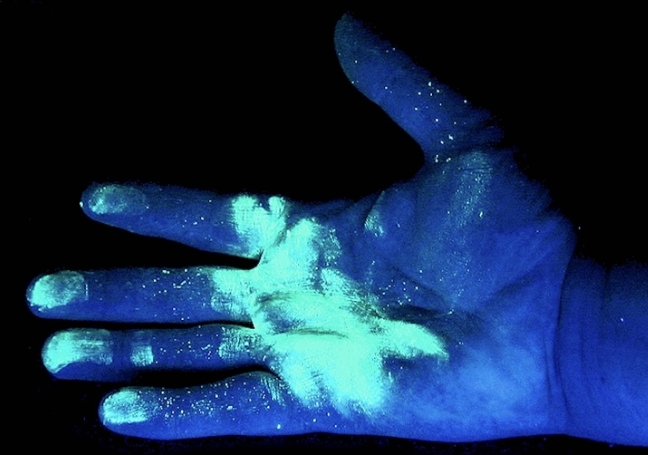
Case Study 1: The Hotel Room Assault
- Situation: A suspected assault in a hotel room.
- Method: Investigators used a 365 nm UV-A flashlight.
- Findings: Detected semen stains on bedsheets that were invisible under normal light.
- Outcome: Provided critical DNA evidence that led to a conviction.
Case Study 2: Drug Trafficking Bust
- Situation: Narcotics hidden in a car dashboard.
- Method: UV-A light used to detect traces of fluorescent-tagged drugs.
- Findings: Confirmed the presence of cocaine residues.
- Outcome: Helped secure charges against suspects.
Conclusion: These cases highlight the practicality and reliability of UV light in uncovering hidden evidence.
7. Challenges and Limitations of UV Light in Forensics
| Challenge | Impact | Solution |
|---|---|---|
| Background Fluorescence | False positives due to materials like detergents | Use contrast filters and multiple wavelengths |
| Degraded Evidence | Reduced fluorescence in aged samples | Enhance using chemicals like luminol |
| Health Risks | UV-C can cause skin and eye damage | Wear protective glasses and clothing |
Recommendation: Proper training and equipment are essential for safe and accurate UV light use.
8. Maintenance Tips for UV Flashlights in Forensics
- Regular Cleaning: Use alcohol wipes to remove residue from the lens.
- Battery Check: Ensure full charge to maintain optimal brightness.
- Wavelength Calibration: Verify with a spectrometer if available.
Tip: Store UV flashlights in protective cases to avoid lens scratches.
9. Summary of Key Findings
| Aspect | Key Insight |
|---|---|
| Best Wavelength for Forensics | UV-A (365 nm) for most biological and trace evidence |
| Most Common Evidence Detected | Bodily fluids, fingerprints, fibers |
| Top Challenges | Background fluorescence, safety risks |
| Recommended Practice | Use protective gear and combine wavelengths |
Conclusion: UV light is an essential tool for forensic investigations, capable of revealing hidden evidence quickly and efficiently. By understanding the science and limitations of UV light, investigators can maximize its potential in solving crimes.
The post How UV Light Reveals Hidden Evidence at Crime Scenes appeared first on Tank007.
]]>The post Top Applications of UV Flashlights in Law Enforcement Investigations appeared first on Tank007.
]]>What is a UV Flashlight?
UV flashlights emit ultraviolet light that is invisible to the naked eye but can reveal certain materials and substances that are otherwise undetectable. UV light is typically categorized into three types based on its wavelength:
- UV-A (long wave): Most commonly used in forensic and law enforcement applications, it causes many substances (e.g., blood, bodily fluids, and certain chemicals) to fluoresce under UV exposure.
- UV-B and UV-C (shorter wave): Used less frequently in field investigations due to potential harm to the skin, these wavelengths are more commonly used in controlled laboratory environments.
Top Applications of UV Flashlights in Law Enforcement Investigations
1. Blood and Bodily Fluid Detection
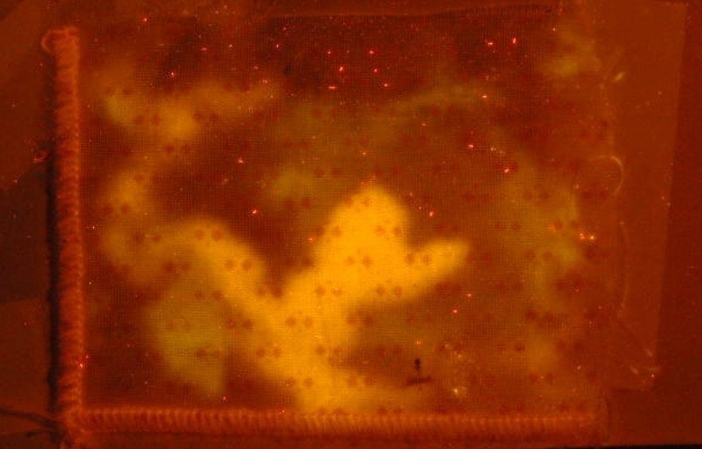
One of the most important uses of UV flashlights in forensic investigations is detecting traces of blood and other bodily fluids. Even when blood is not visible to the naked eye, UV light can cause it to fluoresce, revealing stains or droplets that might otherwise be overlooked. UV light is particularly useful for:
- Detecting Blood: Blood stains that are invisible under normal light can glow under UV light, making it easier for investigators to identify potential crime scenes or find traces of evidence.
- Locating Semen or Other Fluids: UV flashlights can also reveal traces of semen or other bodily fluids, which may be crucial in cases of sexual assault.
How It Works:
UV light causes certain proteins and enzymes found in blood and bodily fluids to fluoresce, making them visible to investigators.
2. Document Authentication
UV flashlights play a critical role in verifying the authenticity of documents. Many official documents (such as passports, IDs, and currency) have security features that are only visible under UV light. For law enforcement officers, this is particularly valuable in:
- Counterfeit Detection: Identifying fake IDs, passports, or currency that may contain hidden UV security features.
- Tracking Stamps and Security Marks: Many sensitive documents are marked with invisible UV ink that can only be seen with a UV flashlight, helping officers identify legitimate items.
How It Works:
UV security marks or invisible inks, which are often used in official documents, are designed to absorb UV light and re-emit it in visible wavelengths, allowing them to be detected under a black light.
3. Drug and Chemical Detection
UV flashlights are also essential in identifying narcotics and other illicit chemicals at crime scenes. Many drugs, such as marijuana, cocaine, or methamphetamine, can glow or fluoresce when exposed to UV light. In addition, UV light can help locate chemical residues that might indicate illegal activity.
- Detecting Drugs: Certain drugs and their packaging can fluoresce under UV light, making it easier to identify controlled substances during investigations.
- Locating Chemical Spills: UV light can reveal chemical spills or traces left behind by illegal activities like drug manufacturing or arson.
How It Works:
The unique chemical composition of certain substances makes them reactive to UV light, which causes them to glow or fluoresce.
4. Fingerprint Detection
UV flashlights can be used in conjunction with fingerprint powders to identify latent prints that are difficult to see under normal lighting conditions. The fluorescence of certain fingerprint powders under UV light enhances the contrast between the print and the surface, making it easier to capture and analyze.
- Revealing Fingerprints: UV light can reveal prints that have been dusted with fluorescent powder, especially in cases where traditional methods may fail to reveal details.
- Surfaces: UV light is particularly useful for detecting prints on non-porous surfaces like glass, plastic, or metal, which can be challenging with traditional fingerprinting techniques.
How It Works:
UV light causes the fluorescent powder used on fingerprints to glow, which enhances the visibility of the print.
5. Crime Scene Analysis and Evidence Collection
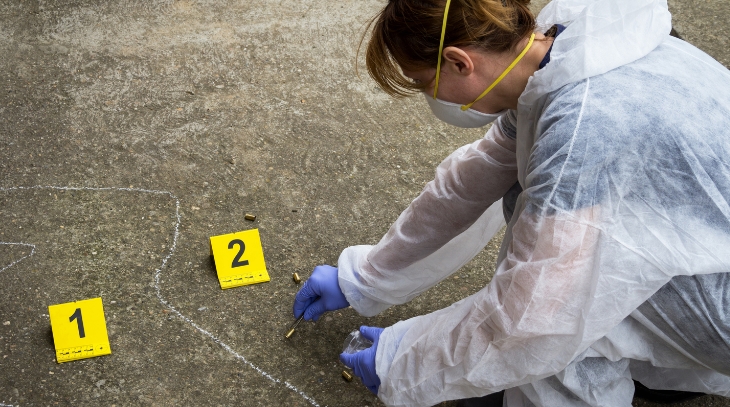
UV flashlights can help investigators identify hidden evidence at crime scenes. This includes locating traces of substances that may not be visible under normal light, such as fibers, hairs, or certain chemicals. By illuminating a crime scene with UV light, officers can spot additional evidence that might be crucial for solving a case.
- Finding Hairs and Fibers: UV light can make fibers and hairs stand out against the background, which may link a suspect to a crime scene.
- Locating Hidden Residues: Some chemical residues or materials may be invisible to the naked eye but become visible under UV light, aiding in evidence collection.
How It Works:
Many materials, including synthetic fibers, can reflect UV light in ways that make them visible against certain surfaces, revealing hidden evidence.
Comparison of UV Flashlights for Law Enforcement Use
Here’s a comparison table of some popular UV flashlights that are commonly used in law enforcement investigations:
| Flashlight Model | Wavelength | Power Output | Portability | Battery Type | Special Features |
|---|---|---|---|---|---|
| Tank007 AA02 UV Light | 365 nm | 3W | Compact | Rechargeable | Portable, high-intensity UV for small-scale investigations, ideal for handheld use |
| Streamlight 51018 UV Light | 365 nm | 5W | Medium | AA batteries | High-powered, durable, and efficient for larger-scale investigations |
| Maglite LED UV | 365 nm | 1W | Portable | AA batteries | Lightweight and convenient for quick, on-the-go inspections |
| SureFire G2X Pro UV | 365 nm | 6W | Medium | CR123A batteries | Dual-output, high-intensity, used for forensic analysis and crime scene investigations |
| Nitecore EA41 UV Light | 365 nm | 5W | Compact | AA batteries | High power output, durable, ideal for field use, especially for UV fluorescent markers |
Final Thoughts
UV flashlights are indispensable tools in law enforcement investigations, offering a unique ability to detect hidden evidence that might otherwise go unnoticed. Whether it’s locating blood or bodily fluids at a crime scene, verifying the authenticity of documents, or detecting illicit substances, UV flashlights provide officers with a powerful tool to enhance their investigative capabilities.
The post Top Applications of UV Flashlights in Law Enforcement Investigations appeared first on Tank007.
]]>The post Step-by-Step Guide to Using UV Flashlights at Crime Scenes appeared first on Tank007.
]]>Why Use UV Flashlights at Crime Scenes?
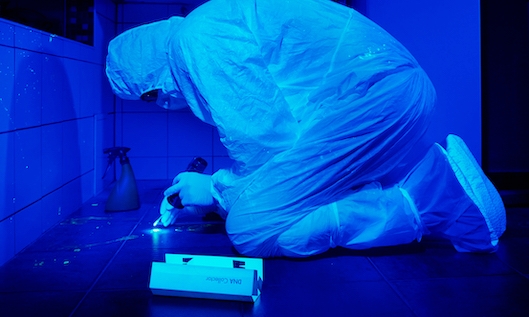
UV light reveals substances that fluoresce under ultraviolet wavelengths. These can include organic materials, chemical residues, and synthetic fibers, which are often pivotal in solving cases.
| Key Benefits of UV Flashlights | Description |
|---|---|
| Enhanced Evidence Visibility | Detects substances not visible in normal light. |
| Non-Invasive Examination | No need to alter or disturb the crime scene. |
| Portable and Efficient | Compact design makes it easy to inspect large areas quickly. |
Step 1: Selecting the Right UV Flashlight
Choosing the correct flashlight is crucial for effective evidence detection. Consider these factors:
| Feature | Importance | Recommendation |
|---|---|---|
| Wavelength | Affects the types of evidence detected. | Use 365nm for bodily fluids, 395nm for general applications. |
| Intensity | Determines how well evidence fluoresces. | Choose at least 3W for better visibility. |
| Durability | Required for outdoor or rugged environments. | Opt for shockproof and waterproof models. |
| Battery Life | Necessary for long investigations. | Use rechargeable lithium-ion batteries. |
Step 2: Preparing the Crime Scene
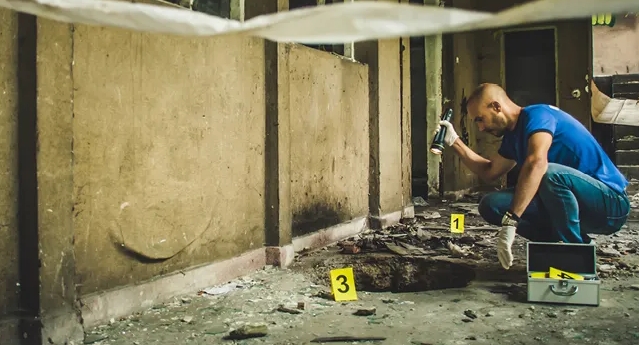
- Darken the Area: Reduce ambient light to enhance fluorescence visibility.
- Wear Protective Gear: UV light can damage skin and eyes. Always wear UV-blocking goggles and gloves.
- Document the Scene First: Capture initial photos in natural light to maintain context.
Step 3: Using the UV Flashlight
How to Inspect Specific Evidence Types
| Type of Evidence | Appearance Under UV Light | Tips for Inspection |
|---|---|---|
| Bodily Fluids | Fluoresces as bright white or yellow. | Use 365nm wavelength for the best results. |
| Fingerprints | Glows if treated with fluorescent powders or chemicals. | Scan non-porous surfaces like glass or metal. |
| Fibers and Threads | Synthetic materials often fluoresce in bright colors. | Sweep UV light across fabrics to detect patterns. |
| Bloodstains | Usually appears black under UV light without chemicals. | Apply luminol for enhanced visibility. |
| Trace Evidence (e.g., paint chips) | May fluoresce depending on the material’s composition. | Use a slow, sweeping motion to cover all surfaces. |
Step 4: Documenting Evidence
- Photograph Evidence Under UV Light: Use a camera with UV filters to capture clear images.
- Mark Evidence Locations: Use tags or markers for easy identification.
- Log Observations: Record details about the evidence, such as type, location, and fluorescence color.
Step 5: Collecting Evidence
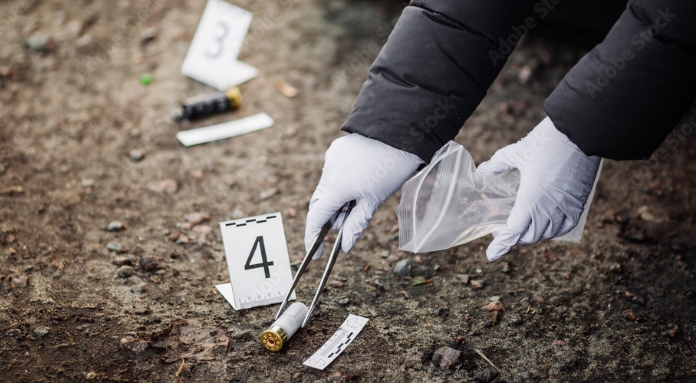
- Use Sterile Tools: Minimize contamination with tweezers, swabs, or gloves.
- Store Properly: Place collected items in UV-protected, labeled containers.
- Maintain Chain of Custody: Record all handling details to ensure evidence integrity.
Comparison of UV Flashlights for Crime Scenes
| Feature | Basic UV Flashlights | Professional-Grade UV Flashlights |
|---|---|---|
| Wavelength Options | Limited (e.g., 395nm) | Multiple (e.g., 365nm and 395nm) |
| Intensity | Moderate | High-powered for better fluorescence |
| Durability | Minimal shock or water resistance | Fully shockproof and waterproof |
| Battery Life | Short | Long-lasting, rechargeable batteries |
| Price Range | Low | Higher due to advanced features |
Step 6: Ensuring Accuracy
- Cross-Verify Findings: Use traditional forensic methods alongside UV analysis.
- Recheck Evidence: Sweep the scene multiple times with different wavelengths.
- Train Personnel: Ensure all investigators are skilled in using UV tools.
Conclusion
UV flashlights are vital for crime scene investigations, offering unparalleled efficiency in uncovering hidden evidence. By following this guide, investigators can maximize the utility of UV flashlights and ensure the collection of high-quality, admissible evidence.
The post Step-by-Step Guide to Using UV Flashlights at Crime Scenes appeared first on Tank007.
]]>The post How to Choose the Best UV Flashlight for Forensic Investigations appeared first on Tank007.
]]>1. Understanding the Role of UV Flashlights in Forensic Investigations
UV flashlights are widely used in forensic investigations to detect materials that fluoresce under ultraviolet light. These include:

- Biological Evidence: Bodily fluids (blood, saliva, sweat, semen).
- Trace Evidence: Fibers, fingerprints, and gunshot residues.
- Counterfeit Evidence: Fake currency, altered documents, and forged artworks.
By emitting UV light of specific wavelengths, these flashlights help investigators quickly identify critical evidence, even in challenging environments.
2. Key Features to Consider When Choosing a UV Flashlight for Forensic Use
| Feature | Importance | Recommended Specification |
|---|---|---|
| Wavelength | Determines the type of materials detectable and fluorescence strength. | 365nm for biological evidence; 395nm for general use |
| Light Intensity | Affects the visibility and clarity of fluorescence under UV light. | Minimum 5W or higher for stronger illumination |
| Durability | Essential for field investigations in various environmental conditions. | Shockproof, waterproof, and heat-resistant design |
| Portability | Lightweight and easy to carry for use at crime scenes. | Compact, handheld flashlights |
| Versatility | Ability to switch between different wavelengths for multiple forensic applications. | Multi-wavelength or combo flashlights preferred |
3. Why Choose TANK007 CI02 Combo Flashlight Kit?
The TANK007 CI02 Combo Forensic Flashlight Kit is specifically designed for professional forensic investigators. This kit offers advanced features and exceptional performance, making it ideal for detecting evidence under various conditions.
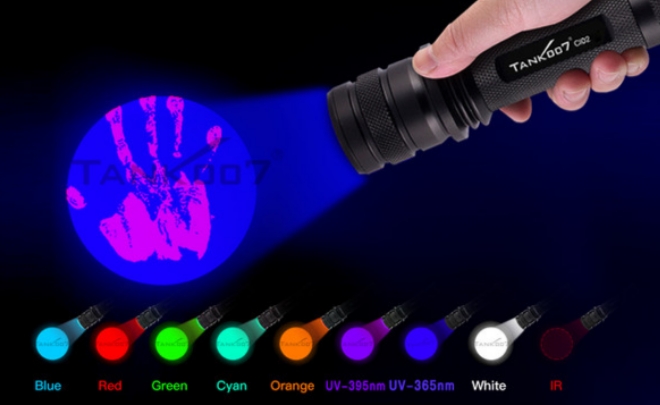
Key Features of TANK007 CI02 Combo Kit:
- 8 LED Color Detection Options: Includes UV, blue, and other wavelengths to detect a wide range of materials.
- 365nm UV Wavelength: Perfect for forensic detection of biological fluids and trace evidence.
- High-Intensity Beam: Offers strong illumination for clear visibility of evidence.
- Rugged Design: Shockproof and waterproof, suitable for field investigations.
- Portable Case: Comes with a durable carrying case for easy transport and organization.
4. How to Compare UV Flashlights for Forensic Use
| Criteria | TANK007 CI02 Combo Kit | Other Standard UV Flashlights |
|---|---|---|
| Wavelength Options | Multi-wavelength (365nm, 395nm, and more) | Typically single-wavelength |
| Detection Range | Suitable for diverse forensic applications | Limited to specific evidence types |
| Durability | Shockproof, waterproof, field-ready | May not withstand harsh conditions |
| Customizable Beam | Adjustable beam size and focus | Fixed beam with limited control |
| Portability | Comes with an organized case | May lack proper storage or carrying solutions |
5. Tips for Using UV Flashlights in Forensic Investigations
- Optimize Your Environment: Perform investigations in a dark or dimly lit space to enhance the visibility of fluorescence.
- Wear Protective Gear: Use UV-blocking goggles to protect your eyes from prolonged exposure to UV light.
- Adjust the Beam: Use adjustable focus and beam width to target specific areas for a closer examination.
- Document Evidence: Capture photos or videos under UV light to record fluorescence patterns for further analysis.
6. Common Applications of UV Flashlights in Forensic Work
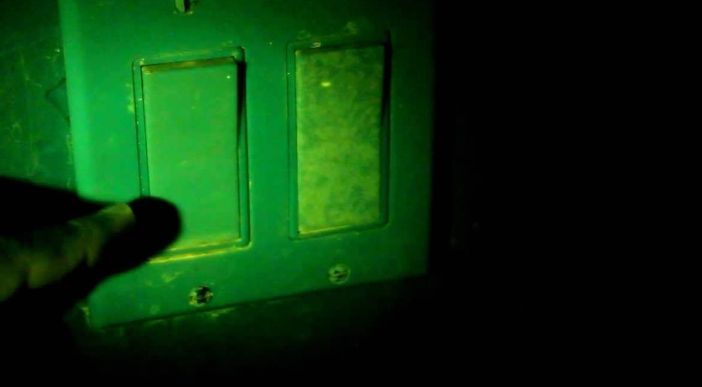
| Application | How UV Flashlights Help |
|---|---|
| Biological Fluid Detection | Makes bodily fluids fluoresce under UV light for identification and collection. |
| Fingerprint Analysis | Enhances fingerprint visibility with UV-reactive powders or natural residues. |
| Document Examination | Reveals alterations, counterfeit watermarks, or security features in documents. |
| Trace Evidence Identification | Locates fibers, residues, or other microscopic materials that fluoresce. |
Conclusion
Choosing the right UV flashlight for forensic investigations requires careful consideration of wavelength, intensity, and durability. The TANK007 CI02 Combo Flashlight Kit stands out as an excellent choice, offering versatile wavelength options, durability, and portability. By using advanced tools like this kit and following best practices, forensic investigators can effectively uncover crucial evidence, aiding in solving complex cases.
For more information or to purchase the TANK007 CI02 Combo Kit, visit the product page here.
The post How to Choose the Best UV Flashlight for Forensic Investigations appeared first on Tank007.
]]>The post The Role of UV Flashlights in Crime Scene Investigation appeared first on Tank007.
]]>In modern crime scene investigations, ultraviolet (UV) flashlights have become essential tools for forensic experts. They are used to detect, analyze, and document evidence that is invisible to the naked eye. UV light can reveal bodily fluids, fingerprints, drug residues, and trace evidence, significantly improving the efficiency and accuracy of investigations. This article explores the science behind UV flashlights, their practical applications, and key considerations when using them in forensic work.
1. The Science Behind UV Flashlights in Forensics
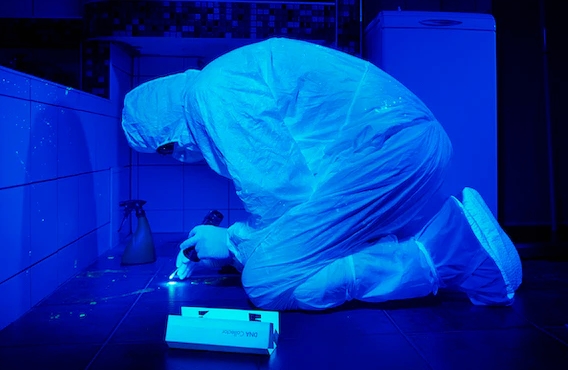
UV light is a type of electromagnetic radiation with wavelengths shorter than visible light but longer than X-rays. For forensic purposes, UV flashlights typically operate within three main UV spectrums:
| UV Spectrum | Wavelength Range | Application in Forensics |
|---|---|---|
| UV-A (Longwave) | 320–400 nm | Detection of bodily fluids, trace evidence, and counterfeit materials. |
| UV-B (Midwave) | 280–320 nm | Limited forensic use; can reveal specific chemical traces. |
| UV-C (Shortwave) | 100–280 nm | Sterilization and detection of certain biological evidence. |
Fluorescence Effect: When UV light strikes certain materials, they absorb the energy and re-emit it as visible light, causing them to fluoresce. This phenomenon allows investigators to identify hidden evidence.
2. Key Applications of UV Flashlights in Crime Scene Investigation
UV flashlights are utilized across various forensic disciplines. Below are some critical applications:
| Application | Description | Evidence Detected |
|---|---|---|
| Bodily Fluids Detection | UV light reveals blood, semen, saliva, and other fluids due to fluorescence. | Bloodstains, saliva, semen, urine. |
| Fingerprint Analysis | Enhances fingerprint visibility after treatment with fluorescent dyes. | Fingerprints on non-porous surfaces. |
| Drug Residue Identification | Certain drugs fluoresce under UV light. | Cocaine, heroin, amphetamines. |
| Trace Evidence Detection | Identifies fibers, hairs, and other small evidence. | Textile fibers, hair strands. |
| Document Examination | Reveals alterations, forgeries, and counterfeit currency. | Altered documents, fake currency. |
3. Step-by-Step Guide to Using UV Flashlights at Crime Scenes
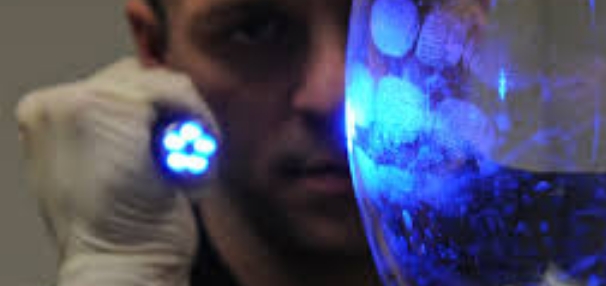
Effective use of UV flashlights requires a systematic approach.
| Step | Action | Objective |
|---|---|---|
| 1 | Secure the crime scene. | Prevent contamination of evidence. |
| 2 | Darken the area. | Maximize visibility of fluorescent evidence. |
| 3 | Wear UV protective gear. | Protect eyes and skin from UV exposure. |
| 4 | Scan surfaces with UV light. | Identify areas of interest. |
| 5 | Mark and document evidence. | Record findings accurately. |
| 6 | Collect samples carefully. | Preserve integrity of evidence. |
| 7 | Analyze in the lab under controlled conditions. | Confirm initial findings. |
Best Practice Tip: Use UV light at different angles and distances to ensure no evidence is missed.
4. Advantages and Limitations of UV Flashlights in Forensics
While UV flashlights are highly effective, they also come with limitations:
| Aspect | Advantages | Limitations |
|---|---|---|
| Detection Ability | Can reveal evidence invisible to the naked eye. | Some materials may not fluoresce clearly. |
| Portability | Compact and easy to carry. | Requires specific power sources. |
| Non-Destructive | Does not damage evidence. | Prolonged exposure can degrade certain materials. |
| Cost-Effective | Affordable compared to other forensic tools. | Requires training for optimal use. |
| Environmental Dependence | Effective in dark environments. | Bright ambient light reduces visibility. |
5. Real-World Case Study: UV Flashlights in Action
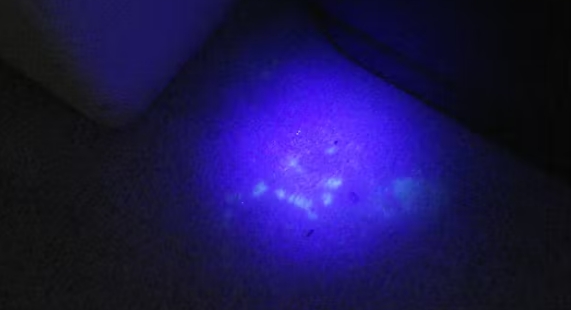
Case Study: The Identification of a Hidden Bloodstain
- Scenario: Investigators discovered a crime scene where blood traces had been cleaned thoroughly.
- Solution: Using a UV flashlight, experts identified residual bloodstains on the floor and walls.
- Outcome: DNA analysis confirmed the identity of the suspect, leading to a conviction.
Key Takeaway: UV flashlights are invaluable for detecting concealed evidence, even in situations where suspects attempt to clean or hide traces.
6. Choosing the Right UV Flashlight for Forensic Use
Selecting the right UV flashlight is crucial for effective evidence detection.
| Feature | Recommendation | Reason |
|---|---|---|
| Wavelength | 365 nm | Ideal for detecting most bodily fluids and trace evidence. |
| Light Intensity | High output (e.g., 1000mW) | Ensures effective fluorescence. |
| Battery Life | Long-lasting | Reduces interruptions during investigations. |
| Build Quality | Waterproof and durable | Suitable for harsh crime scene environments. |
| Portability | Lightweight design | Easy to handle during prolonged use. |
7. Safety Precautions When Using UV Flashlights
UV light can be harmful if not used properly. Follow these safety guidelines:
- Wear UV-blocking glasses and gloves.
- Avoid direct exposure of UV light to skin and eyes.
- Use UV flashlights in short bursts to minimize exposure.
- Train investigators in proper handling and usage.
- Store UV flashlights safely when not in use.
8. Conclusion
UV flashlights have revolutionized the field of crime scene investigation by providing a reliable, non-destructive method to uncover hidden evidence. Their ability to detect bodily fluids, fingerprints, and trace materials makes them an indispensable tool for forensic professionals. However, effective use requires proper training, appropriate equipment selection, and strict adherence to safety protocols.
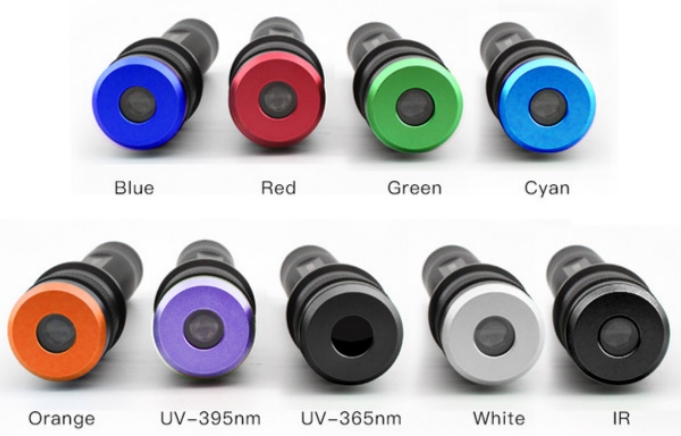
By incorporating UV flashlight technology into standard forensic practices, investigators can significantly improve the accuracy and reliability of evidence collection, ultimately leading to more successful criminal convictions.
The post The Role of UV Flashlights in Crime Scene Investigation appeared first on Tank007.
]]>The post Applications of UV flashlights in criminal investigation and forensics, such as finding hidden bloodstains, fingerprints and other evidence appeared first on Tank007.
]]>
- Bloodstain detection: Blood emits fluorescence under ultraviolet light, making uv flashlights a powerful tool for detecting concealed or cleaned-up bloodstains. These bloodstains may be deliberately obscured by criminals or may be difficult to detect under normal lighting.
- Fluid detection: Apart from blood, other bodily fluids like semen, saliva, and urine also fluoresce under ultraviolet light. These pieces of evidence can help investigators track suspects or confirm different crime details.
- Fingerprint identification: Fingerprints may not be visible under regular lighting in certain circumstances, but they exhibit visible fluorescence under ultraviolet light. UV flashlights can reveal hidden fingerprints, which is invaluable in solving cases like burglaries.
- Tracing transferred items: Criminals often attempt to transfer items to other locations after committing the crime to cover their tracks. Ultraviolet flashlights can help locate these items, as they may retain fluorescence marks from the crime scene.
- Evidence detection: Critical evidence such as hair, fibers, fluorescent dust, etc., may be present at the crime scene or on the victim. Under ultraviolet light, such evidence becomes more discernible.
- Crime scene investigation: Ultraviolet flashlights are useful for conducting crime scene investigations, aiding in determining the area of the incident, searching for discarded items, or finding evidence.

It is important to note that while ultraviolet flashlights have significant applications in criminal investigations and forensic science, they are merely auxiliary tools and need to be used in conjunction with other investigation techniques and methods. Additionally, when using ultraviolet flashlights, investigators should take appropriate protective measures, as prolonged exposure to ultraviolet light can be harmful to the eyes and skin.
The post Applications of UV flashlights in criminal investigation and forensics, such as finding hidden bloodstains, fingerprints and other evidence appeared first on Tank007.
]]>